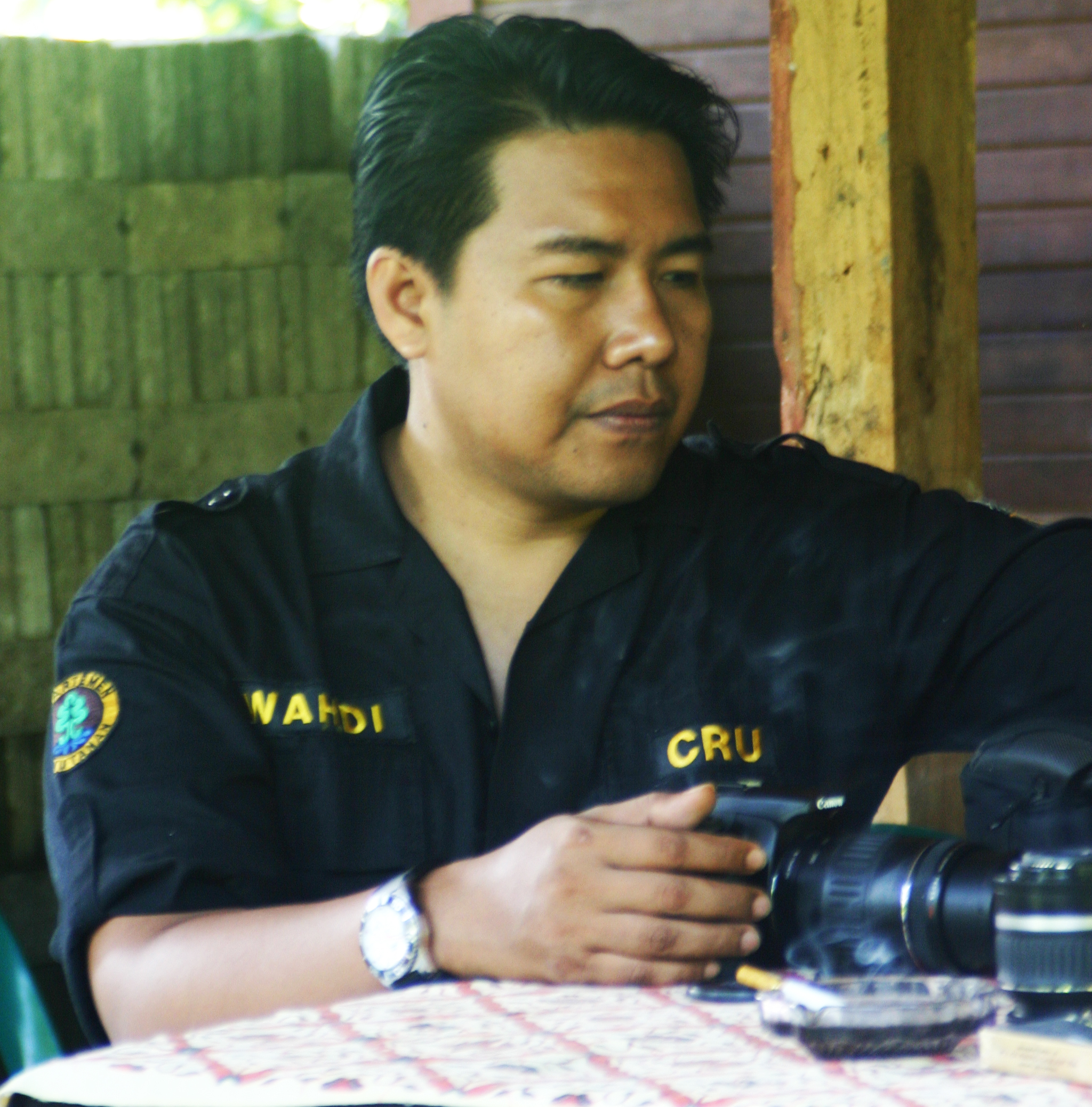Wahdi
The first time I met Wahdi was the first night after my arrival in Banda Aceh. My first impression of him was approachable, educated and charming. I did not use the word charming by accident, he easily charms the people around him. He is a very diplomatic person, respected and recognized. Wahdi has been working on the human-elephant conflict with Flora and Fauna International (FFI, see project description) for several years and is part of the team that created the Conservation Response Unit (CRU, see project description) as a stakeholders project. ».
Wahdi has always been fascinated by the environment. During his veterinary studies he started a volunteer position working closely with elephants in the government program to protect the endangered species in Indonesia that began 15 years ago. This gave him a clear idea of the problems root causes: “A habitat for the elephant always more reduced by deforestation for planting new crops, but also a loss of tradition in the choice of crops and in the perception of the elephant.” The elephants are a part of the history of Aceh, it was once a cherished animal and used for different tasks in the fields or on the battlefield. The Acehnese had a great respect for this iconic animal, and used friendly words for the animal like “Meurah Po” instead of the word elephant. Accoring to him, during the last twenty years, the introduction of new crops in plantations, like palm trees for palm oil, which are very attractive to the elephant, is one of the major reasons for the escalation of conflicts between humans and elephants. These conflicts give off a bad impression of the elephant, not only by farmers, but also by citizens because of, “the negative image conveyed in the media.” Wahdi confessed that he regrets this change of view being passed from generation to generation and wishes that respect for the animal to be restored. When elephants were respected people were cultivating spices, the majority of which were traditional herbs in Aceh which, according to him, contributed to the reputation of Sumatra and allowed the coexistance with elephants. ».
This is where one of the main solutions to the survival of elephants lies. Using his words: “we can live with the elephant if we adjust the way we live. Many people work on repelling wild elephants when they are working on mitigating human elephant conflicts, but there has been only little attempt to understand how we can live together. Take the example of a farmer: he needs to understand the weather and the soil quality to know what seeds he can plant, but he never takes into account the presence of the elephant, he thinks they are the problem of the government.” For Wahdi, we try to separate humans and animals with barriers, but there are only, “psychological barriers.” If the elephants are travelling along their paths, they will cross those barriers. Yet when considering how to live with the elephants, Wahdi suggests there are hundreds of solutions. We should, “revitalize the way people lived in the past, which was not only compatible with the elephants, but with soil, water requirements, etc .” ».
Working on changing and improving the livelihoods of the local populations can open up work on conservation projects in collaboration with the local government. Even though the government is not directly invovled in conservation projects, Wahdi hopes they will invest in the livelihoods of the citizens. The project of the human-elephant conflict must link these two objectives. Wahdi also seems to understand the political side that surround the protection of the environment in Indonesia. It is in this context that he participated in the creation of the CRU, which for him is a beautiful concept: “it creates a bridge between ex-situ and in-situ protection using elephants coming from governmental camps (…where the condition is which they are living would make you cry…) for the protection of the environment on the ground. It also adds value by bringing elephants to the community, but also rehabilitating the mahout image and their work within the local communities.” FFI now has people permanently working with the CRU, thereby creating a climate of trust with the local people, making it more likely for them to seek help. Wahdi also recognizes that for the time being, some aspects of the concept of the CRU have not been implemented yet due to lack of resources. They sometimes act on the short-term soution, but still need to prepare a better long-term action. “It is not just one time action and then we go away (hit and run), we will live with the community and it gives them the feeling that we care.” ».

